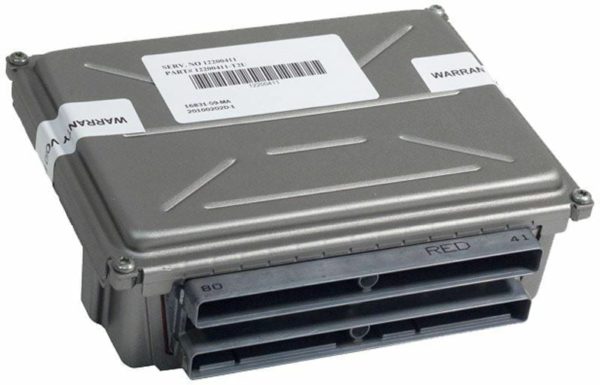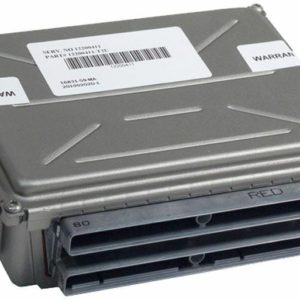Is Your GM Truck or SUV Suddenly Acting Up?
If you’re behind the wheel of a 2001-2002 Silverado, Sierra, Tahoe, or another GM vehicle from this era, you know it’s a workhorse. But when the brain of the operation—the Powertrain Control Module (PCM)—starts to fail, it can cause some of the most frustrating and difficult-to-diagnose problems I see in my shop. You might be experiencing a sudden loss of power, erratic shifting, a persistent Check Engine Light, or even a vehicle that refuses to start at all.
From the Service Bay: A Real-World Diagnostic
“A customer’s 2002 Silverado 1500 came in on a tow truck last week with a classic no-start condition. The engine would crank but never fire up. He’d already replaced the fuel pump and the crank sensor, but nothing worked. After hooking up my scanner, I found a complete lack of communication with the PCM. A quick check of the wiring confirmed our suspicion: the module was dead. These PCMs are often located under the battery tray, where years of heat cycles, vibration, and potential acid leaks can take their toll. We installed one of these pre-programmed modules, performed a quick security relearn, and the truck fired up on the first try. It’s a common failure point I’ve diagnosed hundreds of times.”
Common Symptoms of a Failing GM PCM
A failing PCM doesn’t always mean a dead vehicle. The signs can be subtle at first and worsen over time. If your truck is showing any of these signs, the PCM should be your primary suspect after ruling out more common sensor or wiring issues.
- ✔ Check Engine Light: You may see codes related to internal module failure, sensor reference voltage, or communication errors (U-codes).
- ✔ Erratic Transmission Shifting: The PCM controls shift points. A faulty module can cause harsh shifts, delayed engagement, or getting stuck in one gear.
- ✔ Poor Fuel Economy: Incorrect fuel and timing calculations from a failing PCM can cause your engine to run rich or lean, tanking your gas mileage.
- ✔ Engine Stalling or Misfiring: The module might be failing to properly command the ignition coils or fuel injectors, leading to a rough-running engine.
- ✔ No-Start Condition: This is the ultimate failure, where the PCM can no longer manage the essential functions required to start the engine.
The Direct-Fit, Programmed Solution
Forget the hassle and high cost of a dealership visit. This replacement PCM is the most straightforward and reliable way to get your vehicle back in top form. We take the guesswork out of the repair by programming the module specifically for your vehicle before it ever leaves our facility. All we need is your Vehicle Identification Number (VIN).
This isn’t just a part; it’s a complete solution. We flash it with the latest, most stable software updates from GM, which often correct factory bugs and improve overall performance and longevity. This ensures that when you receive the module, it’s ready for installation.
Why Pre-Programming is Crucial
- ✔ VIN-Specific Calibration: Your VIN tells us everything—engine size, transmission type, axle ratio, and emissions equipment. The programming is tailored to these exact specifications.
- ✔ Security System Compatibility: The programming ensures the new PCM will communicate with your vehicle’s anti-theft system (Passlock/VATS). A simple security relearn procedure (which you can do yourself) is typically all that’s needed after installation.
- ✔ Avoids Expensive Tools: You won’t need a high-end scan tool or a subscription to a manufacturer’s programming service. We handle the complex part for you.
- ✔ Restores Original Functionality: Get your engine, transmission, and all related systems operating exactly as the manufacturer intended.
Installation and Compatibility
This PCM, part number 12576160, is a direct replacement for a wide range of GM vehicles. It is also a direct substitute for part numbers 12200411, 12201281, and 52369718. Always match one of these numbers to the one on your original module to guarantee fitment.
Installation is typically straightforward. On most trucks and SUVs like the Silverado, Sierra, and Tahoe, the PCM is located in the engine bay on the driver’s side, often under or near the battery. On vans like the Express and Savana, it’s in the LH rear of the engine compartment. Always disconnect the negative battery terminal before beginning work. Once installed, you will need to perform the security relearn procedure. In some cases, a Crankshaft Variation Relearn (CASE Relearn) may be required with a capable scan tool to clear a P1336 code, though the vehicle will still run and drive without it.


